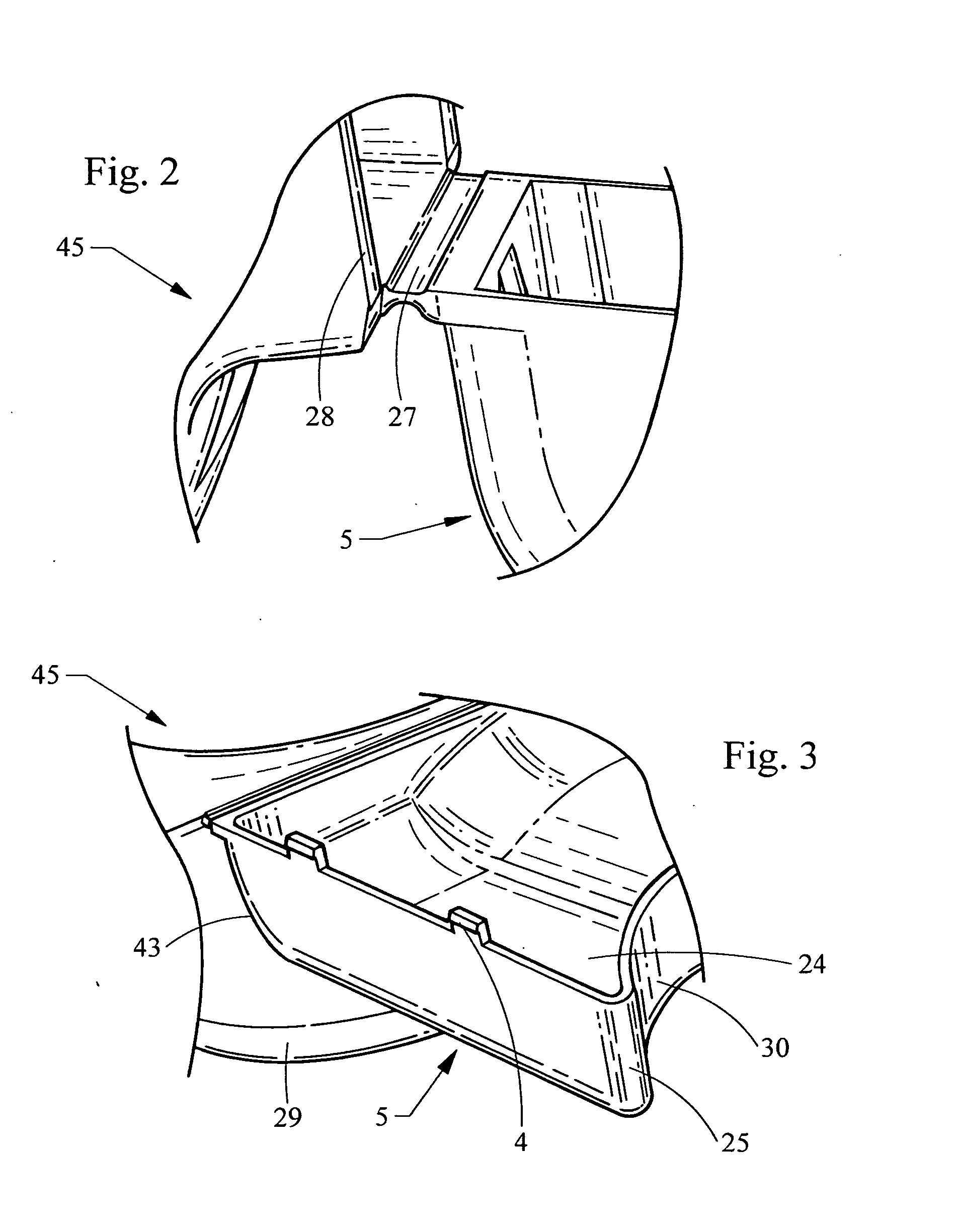Bedpan
a bedpan and metal technology, applied in the field of bedpans, can solve the problems of inconvenient use, high cost of metal bedpans, and numerous disadvantages of metal bedpans compared to plastic bedpans,
- Summary
- Abstract
- Description
- Claims
- Application Information
AI Technical Summary
Benefits of technology
Problems solved by technology
Method used
Image
Examples
Embodiment Construction
[0030] Referring to FIG. 1, a bedpan 50 includes a main body 45 and a living hinge 5. The main body 45 includes a top-left side 2 and a top-right side 6 (also referred to as “top sides 2, 6”) that form a general u-shape and that are ergonomically designed in a slightly concave shape. For example, the top sides 2, 6 include rounded edges to increase comfort to a user of the bedpan 50. Further, the two top sides 2, 6 are wide enough to aid in pressure distribution and decrease the likelihood of bedsore formation. In general, the top sides 2, 6 provide a seating area for the user.
[0031] A primary wing or flange 8 is connected near its top edge to a corresponding one of the top sides 2, 6. The primary wing 8 is further connected near its bottom edge to a generally flat area 10, which in turn is connected to a secondary wing or flange 9. The primary wing 8 is shaped to allow stacking and nesting of the bedpan 50 within another bedpan 50. For example, for stacking and / or nesting purposes...
PUM
 Login to View More
Login to View More Abstract
Description
Claims
Application Information
 Login to View More
Login to View More - R&D
- Intellectual Property
- Life Sciences
- Materials
- Tech Scout
- Unparalleled Data Quality
- Higher Quality Content
- 60% Fewer Hallucinations
Browse by: Latest US Patents, China's latest patents, Technical Efficacy Thesaurus, Application Domain, Technology Topic, Popular Technical Reports.
© 2025 PatSnap. All rights reserved.Legal|Privacy policy|Modern Slavery Act Transparency Statement|Sitemap|About US| Contact US: help@patsnap.com



